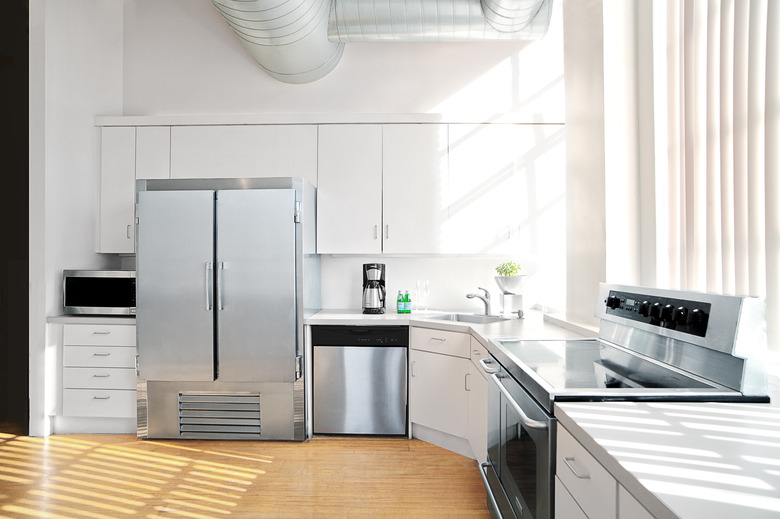4 Reasons Why Your Portable Dishwasher Is Not Draining
A portable dishwasher usually has wheels on the bottom, and it doesn't require the support of cabinetry to keep it upright — making it a great addition for renters or those with older kitchens. Unfortunately, a common problem with these dishwashers is that water doesn't completely drain from the tub. A small amount of water usually stays in the tub to keep the water seal lubricated. However, if you see any more than between 1 and 3 cups, troubleshoot and repair the problem to save money.
Tip
Your dishwasher user manual likely contains some troubleshooting tips, which can vary from brand to brand and model to model. For example, if you have a Whirlpool portable dishwasher not draining, the manufacturer may have a different troubleshooting list than another brand may offer.
Have a portable dishwasher that won't drain? Here are four potential reasons why — and how to troubleshoot the issues.
1. Drain Pump Problems
1. Drain Pump Problems
All portable dishwashers have a pump that pushes water out of the tub and into the drain. If the pump is clogged with food particles or debris, it won't work properly. Here's how to clear out the drain pump:
- Unplug the dishwasher from the power source, and remove the spray arm, spray arm support and bottom rack.
- Clean out the pump and nearby filters.
After you've cleaned out the pump, see if any parts are broken. The impeller looks like a fan, and it is the most common part of the pump to break. Unfortunately, a broken drain pump means that you must replace the whole pump if any part on it is cracked or extremely worn. In other words, you can't repair the pump.
2. Air Gap or Drainage Hose Issues
2. Air Gap or Drainage Hose Issues
If your portable dishwasher won't drain it could potentially that the air gap — which has a cap over it and is usually near the sink — is dirty. Lift up the cap, and dig out any debris inside.
Another reason why your dishwasher isn't draining could be a dirty drainage hose, which captures water moving out of the tub and takes it to the household drain. A drainage hose can easily be cleaned out with a plastic spoon. While you're cleaning it, observe if the hose is kinked, and straighten it. If the hose is crushed or badly kinked, you need a new one.
Tip
Attach the drainage hose beneath the countertop if you don't have an air gap. This creates a high drain loop, which prevents water from the sink from entering the portable dishwasher tub.
3. Household Plumbing or Drain Valve Problems
3. Household Plumbing or Drain Valve Problems
The drainage hose must connect to either the air gap or the household drain. If the home drain is clogged, the dishwasher won't drain. Clean out the drain and internal plumbing with plumbing supplies.
The issue could also be that the drain valve is clogged. The drain valve is located inside the drainage hose, and you'll want to remove any objects that may be stuck in this valve. Lastly, you should check the solenoid valve, which makes the drain open and close. Use a multimeter, and test this solenoid for resistance. If you don't get a reading between infinity and 40 ohms, the solenoid is defective, and you need a new one.
Tip
You should also check your portable dishwasher user manual for the location of the drain valve as each brand and model may be different. For example, a Whirlpool dishwasher drain-valve location may be slightly different than another brand's valve.
4. Motor/Timer Problems
4. Motor/Timer Problems
If you haven't used your portable dishwasher for a while, the motor can get stuck, which can cause it to not drain properly. Unplug the dishwasher, and remove the main access panel. Turn the motor to free it.
If the motor is still stuck or is burned out, get a new one from a dishwasher parts dealer. The timer regulates which component gets power and for how long. Use a multimeter, and see if the timer has continuity. If not, replace it since it's difficult to repair the timer.
